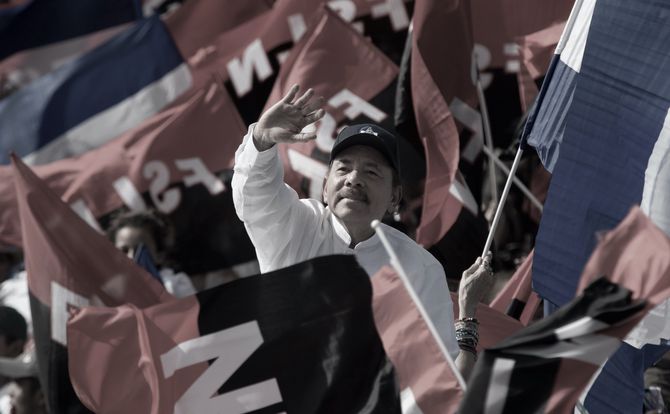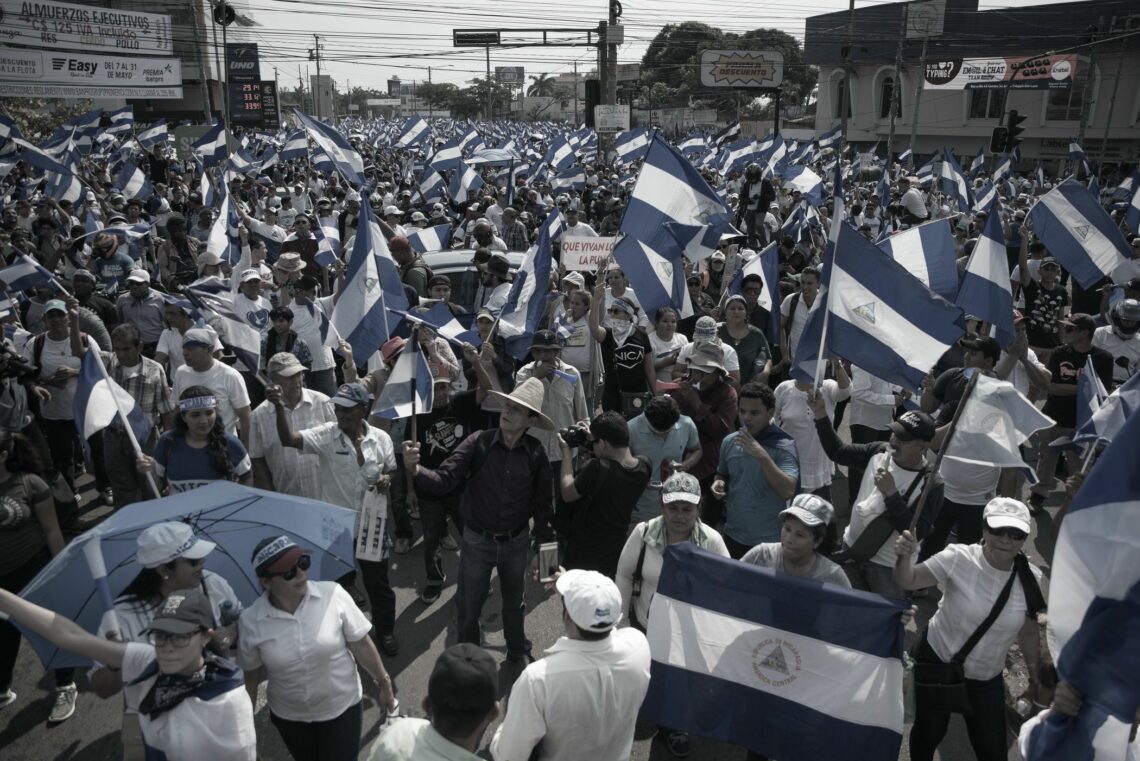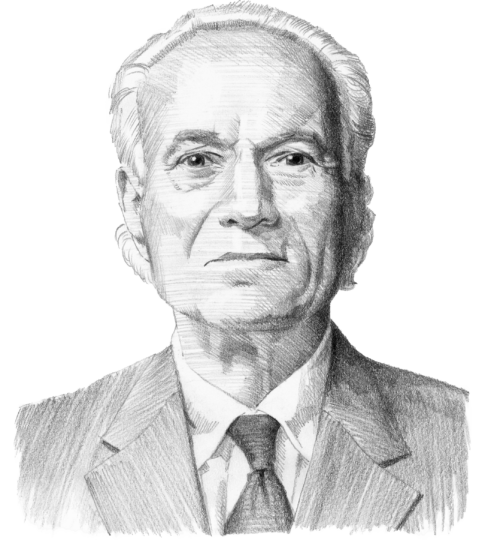Daniel Ortega’s long goodbye
Nicaragua is a cautionary tale for those who see history trending toward democratic governance. President Daniel Ortega has subverted the country’s institutions to create a personalist, authoritarian regime. Now, after the cutoff of oil-based aid from Venezuela, he is relying on guile and bloodshed to stay in power.

In a nutshell
- Nicaragua’s leftist regime is under pressure after losing oil financing from Venezuela
- President Daniel Ortega’s strong-arm tactics have quelled unrest for now
- He hopes minimal concessions will allow him to wait out international pressure
Nicaragua serves as a cautionary tale for those who see history trending toward more democratic forms of governance. It is also a test for those optimists and not a few realists who consider the international community – the United Nations and the European Union, for example, or the Organization of American States (OAS) and the United States in the Western Hemisphere – as an effective actor in setting and enforcing the rules of the game.
Think of Moldova. That country shows how the forms and institutions of democracy can be abused to preserve the outward appearance of democratic governance and the rule of law while creating a personalistic, authoritarian regime. Nicaragua is another example.
Hero to tyrant
The first time he was elected Nicaragua’s president in 1985, Daniel Ortega was a national hero who had led the popular uprising in the name of the Sandinista National Liberation Front. The next time he was elected, in 2007, Mr. Ortega ran a well-oiled political machine, joined ALBA, the alliance of leftist Latin American regimes led by President Hugo Chavez of Venezuela, and began to gather the reins of power into his own hands.
His scheme was buttressed by an informal alliance with the private sector, under which he would leave businesses alone to make money and they would leave him alone to run the country. The alliance with Chavez brought President Ortega the money he needed to buy political support through social programs that, in a decade, reduced Nicaragua’s poverty rate by a third. Oil-based aid from Venezuela under Mr. Ortega’s rule reached the equivalent of 30 percent of the state budget.
Mr. Ortega proposed a pension reform that ignited a public conflagration.
At the same time, the president accumulated power by packing Nicaragua’s Supreme Court and the Electoral Council with loyalists. First, in 2009, the court violated the constitution and overturned constitutional term limits that prevented Mr. Ortega from running for a third term – this time with his wife, Rosario Murillo, as vice president. Then, the electoral board rejected the credentials of the 16 seated opposition members of the legislature – contributing to the victory of Mr. Ortega’s Sandinista National Liberation Front (FSLN) in the November 2011 elections.
Fighting fires
However, Mr. Ortega’s fourth presidential term has not been happy. The regional alliance that had bankrolled President Ortega’s growing power and made it possible for him to accumulate enormous private wealth suddenly fell apart with the collapse of world oil prices, followed by the cutoff of aid from the increasingly troubled leftist regime in Venezuela. Desperate for revenue, in 2018 Mr. Ortega proposed a reform of the pension system that would increase worker and employer payroll taxes while reducing benefits.
That was the match that started a public conflagration. In April 2018, hundreds of thousands of people took to the streets to protest the reform and demand President Ortega’s ouster. Mr. Ortega withdrew the proposal, but he also sent armed thugs of the Sandinista Youth Movement, known as turbas, to terrorize the population and win back the streets. Hundreds were killed, thousands were arrested and more than 60,000 Nicaraguans fled into exile. The violence marked a watershed for the regime, alienating the private sector and the Roman Catholic Church.

In the aftermath of this massacre, representatives of the UN, the OAS, human rights and civil society groups came in to investigate. Devastating reports were issued by all of these international organizations and the U.S. Congress passed legislation condemning the Ortega government. The Trump administration imposed sanctions on all of the government’s leading figures and forced the closing of a bank jointly owned by the Nicaraguan and Venezuelan governments, which the Ortega family had used as a cash cow.
Feeling squeezed
Over the past year, President Ortega has succeeded in quieting the protests through persistent use of the turbas. But all is not well. The economy is paralyzed. International pressure to be rid of the Ortegas is unrelenting, even after the president threw representatives of the OAS human rights commission out of the country.
In February, after months of pressure, the government agreed to a dialogue with the opposition, represented by an umbrella organization called the Civic Alliance (Alianza Civica por la Justicia y la Democracia). After one round of talks, the government agreed to free all political prisoners and to continue discussing how to restore public confidence. Some prisoners have been freed; but little or nothing has been done to prepare new elections or to end the Ortega regime. The hated pension reform, which had precipitated the public outrage in April 2018, was repackaged and passed in June 2019, while the turbas continue marauding throughout the country.
Getting rid of an autocrat is never easy in a poor country.
Last year, Nicaragua’s economy contracted by 5 percent and is predicted to shrink by as much again in 2019. Unemployment is over 10 percent and many small businesses have retreated into the unregistered “gray” economy. A local NGO estimates that by the end of this year, if the current political situation remains unchanged, half of the country’s population will be “vulnerable” or impoverished.
The new law that cuts pension benefits by 30-40 percent will only make things worse. Foreign investment is at a standstill and the tourism, construction and service industries, which drove Nicaragua’s rapid economic growth in the first years of this century, have contracted by double digits. In this scenario, the country’s per capita income will fall to $1,900, down from a high of $2,200 just a few years ago. The lone piece of good news is that remittances from overseas have surged, which is the only way some families survive.
Stall tactics
Getting rid of an autocrat with a virtual monopoly on violence is never easy in a poor country. The extraordinary popular uprising in 2018 was spontaneous and led by young people and local civic organizations with little political experience. Against the relentless brutality of the paramilitaries, this social movement could not be sustained. The civic organizations that formed during the outburst in 2018 are now working to build alliances with the more moderate political opposition. But the Alianza Civica, which has been designated to negotiate with President Ortega, is itself a loose coalition.
Mr. Ortega’s strategy for dealing with international pressure is to continue talking with the opposition, but at his own pace. He has agreed to free prisoners and eased controls on the media, yet has also forced the country’s two most important think tanks to shut down. Even so, new opposition groups keep popping up on the internet. At some point, the deteriorating economy may provoke another popular uprising.
In the short run, so long as President Ortega can pay the turbas, and the U.S. does nothing more than fulminate, he can hold on. Absent another mass uprising, the question is how much longer the aging Sandinista wants to rule in such conditions.








